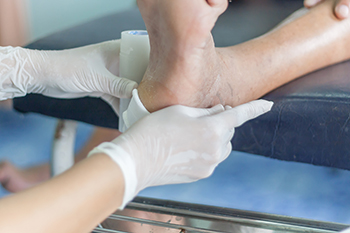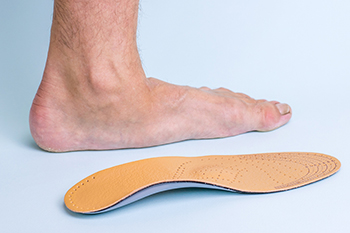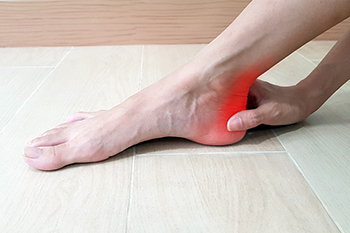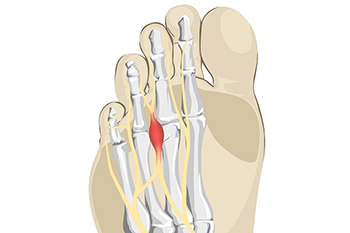Items filtered by date: June 2025
Prioritizing Foot Wound Care for Better Health and Mobility

Proper wound care on the feet is essential for preventing infections, promoting healing, and maintaining overall foot health. This is especially important for individuals with diabetes or circulation issues. Simple daily habits can make a big difference, such as checking the feet for red spots, blisters, or cuts, wearing properly fitting shoes, and performing regular foot inspections. Engaging in physical activity helps to increase circulation and supports tissue repair. A podiatrist can provide expert guidance on wound management, recommend appropriate footwear, and treat any existing foot conditions that may slow healing. If you notice any unusual changes or slow-healing wounds on your feet, it is strongly suggested that you consult a podiatrist for personalized care and support.
Wound care is an important part in dealing with diabetes. If you have diabetes and a foot wound or would like more information about wound care for diabetics, consult with one of our podiatrists from Highlands Foot and Ankle. Our doctor will assess your condition and provide you with quality foot and ankle treatment.
What Is Wound Care?
Wound care is the practice of taking proper care of a wound. This can range from the smallest to the largest of wounds. While everyone can benefit from proper wound care, it is much more important for diabetics. Diabetics often suffer from poor blood circulation which causes wounds to heal much slower than they would in a non-diabetic.
What Is the Importance of Wound Care?
While it may not seem apparent with small ulcers on the foot, for diabetics, any size ulcer can become infected. Diabetics often also suffer from neuropathy, or nerve loss. This means they might not even feel when they have an ulcer on their foot. If the wound becomes severely infected, amputation may be necessary. Therefore, it is of the upmost importance to properly care for any and all foot wounds.
How to Care for Wounds
The best way to care for foot wounds is to prevent them. For diabetics, this means daily inspections of the feet for any signs of abnormalities or ulcers. It is also recommended to see a podiatrist several times a year for a foot inspection. If you do have an ulcer, run the wound under water to clear dirt from the wound; then apply antibiotic ointment to the wound and cover with a bandage. Bandages should be changed daily and keeping pressure off the wound is smart. It is advised to see a podiatrist, who can keep an eye on it.
If you have any questions please contact our office located in Waco, TX . We offer the newest diagnostic and treatment technologies for all your foot and ankle needs.
Ankle Pain in Cyclists and the Role of Podiatric Care

Ankle pain while cycling can stem from overuse, improper technique, or equipment issues. A common technique once believed to enhance performance, known as ankling, encouraged exaggerated ankle motion but is now understood to increase strain without significant benefit. Wearing ill-fitting shoes, poorly aligned cleats, or using pedals that lack support can also contribute to discomfort. Starting with intense rides too quickly may overload the joints and soft tissues. A podiatrist can assess foot and ankle alignment, recommend proper footwear or orthotics, and offer strategies to prevent injury. If ankle pain is interfering with your cycling goals, it is suggested that you consult a podiatrist for a thorough evaluation and personalized plan to support comfort and performance.
Sports related foot and ankle injuries require proper treatment before players can go back to their regular routines. For more information, contact one of our podiatrists of Highlands Foot and Ankle. Our doctor can provide the care you need to keep you pain-free and on your feet.
Sports Related Foot and Ankle Injuries
Foot and ankle injuries are a common occurrence when it comes to athletes of any sport. While many athletes dismiss the initial aches and pains, the truth is that ignoring potential foot and ankle injuries can lead to serious problems. As athletes continue to place pressure and strain the area further, a mild injury can turn into something as serious as a rupture and may lead to a permanent disability. There are many factors that contribute to sports related foot and ankle injuries, which include failure to warm up properly, not providing support or wearing bad footwear. Common injuries and conditions athletes face, including:
- Plantar Fasciitis
- Achilles Tendinitis
- Achilles Tendon Rupture
- Ankle Sprains
Sports related injuries are commonly treated using the RICE method. This includes rest, applying ice to the injured area, compression and elevating the ankle. More serious sprains and injuries may require surgery, which could include arthroscopic and reconstructive surgery. Rehabilitation and therapy may also be required in order to get any recovering athlete to become fully functional again. Any unusual aches and pains an athlete sustains must be evaluated by a licensed, reputable medical professional.
If you have any questions please contact our office located in Waco, TX . We offer the newest diagnostic and treatment technologies for all your foot and ankle needs.
Flat Feet and the Benefits of Custom Foot Orthotics

Flat feet occur when the arches of the feet collapse, causing the soles to make full contact with the ground. This condition can lead to foot pain, fatigue, poor posture, and strain on the ankles, knees, or lower back. Foot orthotics help by providing arch support, improving alignment, and redistributing pressure across the feet. They enhance stability and reduce discomfort during walking or standing. A podiatrist can assess the structure and function of your feet, identify any underlying issues, and create custom orthotics tailored to your needs. With professional guidance, orthotics can help manage symptoms and prevent further complications. If you experience discomfort from flat feet, it is suggested that you consult a podiatrist for effective support and personalized foot care.
If you are experiencing discomfort in your feet and would like to try custom orthotics, contact one of our podiatrists from Highlands Foot and Ankle. Our doctor can provide the care you need to keep you pain-free and on your feet.
What Are Custom Orthotics?
Custom orthotics are inserts you can place into your shoes to help with a variety of foot problems such as flat feet or foot pain. Orthotics provide relief and comfort for minor foot and heel pain.
Over-the-Counter Inserts
Shoe inserts come in a wide variety and are used to treat foot pain, heel pain, and minor problems. For example, arch supports can be inserted into your shoes to help correct overarched or flat feet, while gel insoles are often used because they provide comfort and relief from foot and heel pain by alleviating pressure.
Prescription Orthotics
If over-the-counter inserts don’t work for you or if you have a more severe foot concern, it is possible to have your podiatrist prescribe custom orthotics. These high-quality, custom inserts are designed to treat problems such as abnormal motion, plantar fasciitis, and severe forms of heel pain. They can even be used to help patients suffering from diabetes by treating foot ulcers and painful calluses and are usually molded to your feet individually, which allows them to provide full support and comfort.
If you're experiencing minor to severe foot or heel pain, it’s recommended to speak with your podiatrist about the possibility of using custom orthotics or shoe inserts. A podiatrist can determine which type of custom orthotic or shoe insert is right for you and help you take the first steps toward being pain-free.
If you have any questions please contact our office located in Waco, TX . We offer the newest diagnostic and treatment technologies for all your foot and ankle needs.
Understanding Achilles Tendon Pain

Achilles tendon pain can result from conditions like tendonitis, tendinosis, or a partial or complete tendon rupture. The Achilles tendon connects the calf muscles to the heel and is vital for walking, running, and jumping. Tendonitis is an acute inflammation, often triggered by sudden activity or repetitive strain, and may cause swelling, warmth, and pain. Tendinosis is a chronic condition caused by long-term overuse, which leads to gradual tendon degeneration. Symptoms include stiffness, aching, and pain that worsens with activity but eases with rest. The tendon may feel thickened, tender, or produce a creaking sensation. A rupture can occur suddenly, often during sports, and may feel like a sharp pain or a kick to the back of the leg. It often causes difficulty walking and may result in a visible gap in the tendon. Diagnosis typically involves ultrasound or MRI imaging. Treatment includes rest, orthotics, targeted exercises, or surgery, in severe cases. If you are experiencing heel or ankle pain, especially during or after physical activity, it is suggested that you consult a podiatrist for an accurate diagnosis and personalized treatment plan.
Many people suffer from bouts of heel pain. For more information, contact one of our podiatrists of Highlands Foot and Ankle. Our doctor can provide the care you need to keep you pain-free and on your feet.
Causes of Heel Pain
Heel pain is often associated with plantar fasciitis. The plantar fascia is a band of tissues that extends along the bottom of the foot. A rip or tear in this ligament can cause inflammation of the tissue.
Achilles tendonitis is another cause of heel pain. Inflammation of the Achilles tendon will cause pain from fractures and muscle tearing. Lack of flexibility is also another symptom.
Heel spurs are another cause of pain. When the tissues of the plantar fascia undergo a great deal of stress, it can lead to ligament separation from the heel bone, causing heel spurs.
Why Might Heel Pain Occur?
- Wearing ill-fitting shoes
- Wearing non-supportive shoes
- Weight change
- Excessive running
Treatments
Heel pain should be treated as soon as possible for immediate results. Keeping your feet in a stress-free environment will help. If you suffer from Achilles tendonitis or plantar fasciitis, applying ice will reduce the swelling. Stretching before an exercise like running will help the muscles. Using all these tips will help make heel pain a condition of the past.
If you have any questions, please feel free to contact our office located in Waco, TX . We offer the newest diagnostic and treatment technologies for all your foot care needs.
Spotting the Symptoms of Morton’s Neuroma

Morton’s neuroma is a nerve condition that often affects the ball of the foot, typically between the third and fourth toes. Common symptoms include sharp or burning foot pain, tingling, and numbness that may worsen with walking or wearing tight shoes. Many people describe the sensation as feeling like a pebble or small object is stuck inside the shoe. Causes include repeated pressure on the forefoot, improper footwear, and biomechanical foot problems. Risk factors include wearing high heels, intense physical activity, and foot deformities like bunions or flat feet. A podiatrist can diagnose this condition and recommend effective treatment. If you experience persistent foot discomfort, it is strongly suggested that you seek care from this type of doctor to find relief and prevent further complications.
Morton’s neuroma is a very uncomfortable condition to live with. If you think you have Morton’s neuroma, contact one of our podiatrists of Highlands Foot and Ankle. Our doctor will attend to all of your foot care needs and answer any of your related questions.
Morton’s Neuroma
Morton's neuroma is a painful foot condition that commonly affects the areas between the second and third or third and fourth toe, although other areas of the foot are also susceptible. Morton’s neuroma is caused by an inflamed nerve in the foot that is being squeezed and aggravated by surrounding bones.
What Increases the Chances of Having Morton’s Neuroma?
- Ill-fitting high heels or shoes that add pressure to the toe or foot
- Jogging, running or any sport that involves constant impact to the foot
- Flat feet, bunions, and any other foot deformities
Morton’s neuroma is a very treatable condition. Orthotics and shoe inserts can often be used to alleviate the pain on the forefront of the feet. In more severe cases, corticosteroids can also be prescribed. In order to figure out the best treatment for your neuroma, it’s recommended to seek the care of a podiatrist who can diagnose your condition and provide different treatment options.
If you have any questions, please feel free to contact our office located in Waco, TX . We offer the newest diagnostic and treatment technologies for all your foot care needs.
